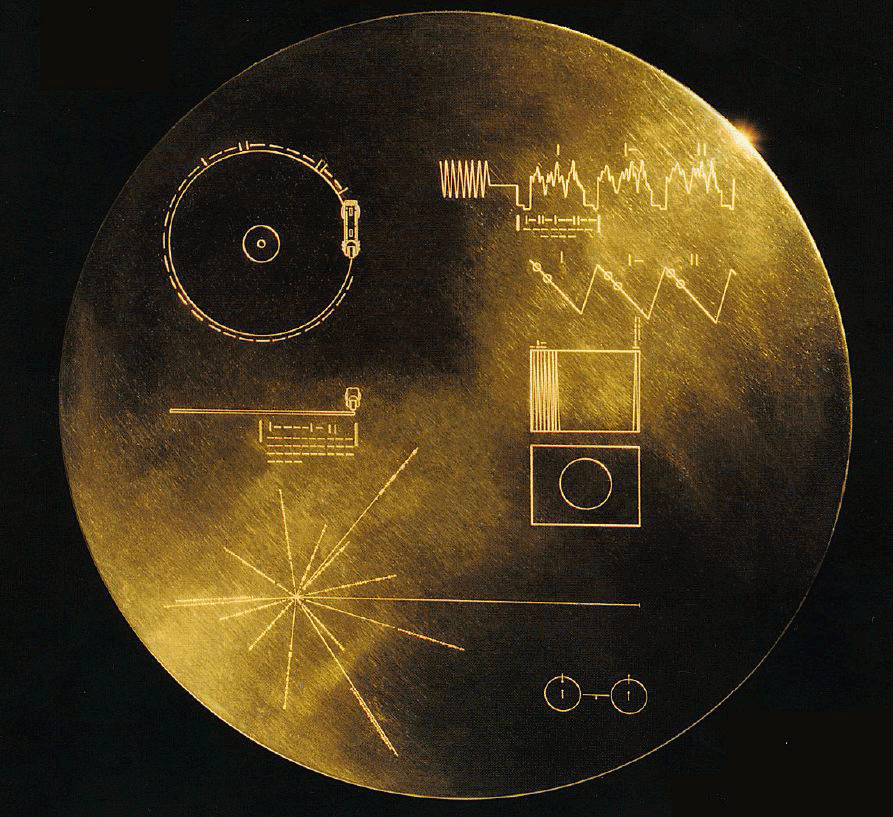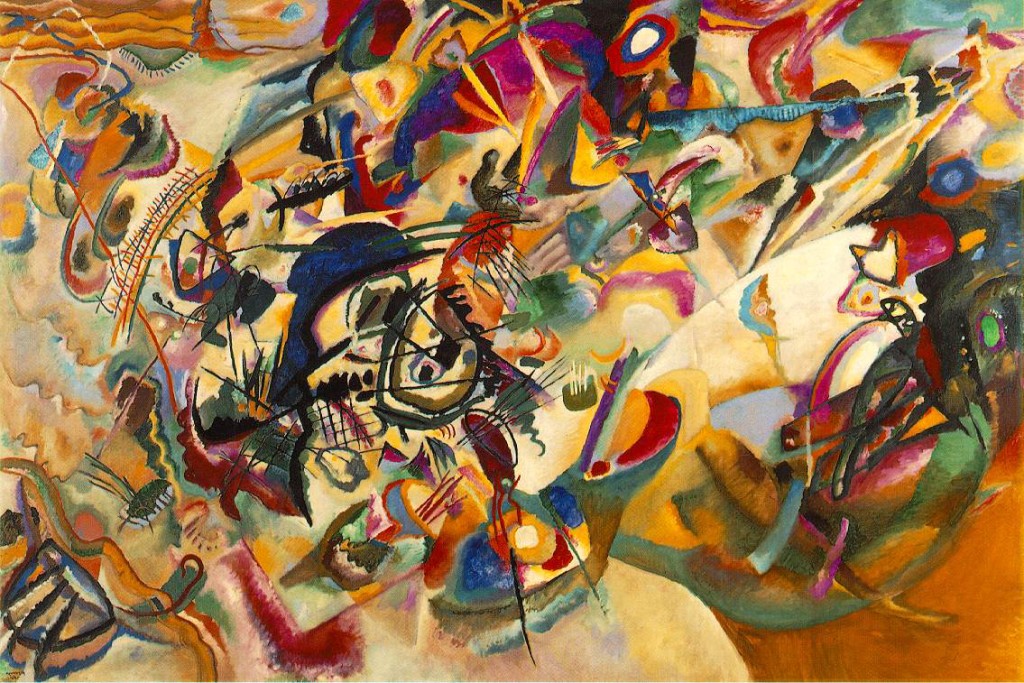
James Gleick’s fantastic “The Information,” appropriately, aims to be encyclopedic. It explores the science and technology of information from an ambitious array of angles: computer science, quantum physics, genomics, encyclopedias themselves, telecommunications … even old-old-school signaling via flames atop periodic towers.
For that reason, it particularly suited my (bad) reading habits of spreading attention amongst way too many titles and genres at once, and taking sometimes years to finish a book. That was the case with “The Information” (which, trust me, is fascinating, and will absolutely keep the attention of even slightly more disciplined readers).
That also makes it hard, at least for me, to write a comprehensive review of the work, which lends itself more to pulling on threads. For instance, one thing that’s stuck with me is Gleick’s inclusion of the so-called ‘Golden Records’ launched aboard the Voyager spacecraft in the ’70s.
The communication of information takes up a large portion of the book, with Claude Shannon playing a central role. Shannon founded the field of information theory by defining communication mathematically as the conveyance information amidst noise. Much of the rest of the book proceeds from or references these initial insights of Shannon, which makes the project of the Voyager probes particularly interesting — in that they are an attempt, even if a somewhat whimsical one, to communicate with alien beings about whom we know absolutely nothing.
I, and likely you, have heard of the Voyager records before. If you haven’t, they are gold-plated phonograph records containing images and sounds of Earth: a message in a bottle to whatever minds might exist out there in interstellar space to find them.

“The Information’s” larger narrative illuminates, I think, the real message that these records would or could send to any little green beings: the presence of a pattern created by an intelligence. The records contain various images from Earth, including of people eating, scientific diagrams, and photos of insects and animals. They include bird and whale songs and other Earth sounds, like thunder and surf. Should any aliens properly decipher the symbolic instructions on how to play the records, the beings will also hear greetings in 55 ancient and modern languages.
And there’s music: classical pieces from Bach and Beethoven, folk music from Azerbaijan, Chuck Berry’s “Johnny B. Goode,” and more. As do most references to the Voyager records, Gleick’s sections focuses mostly on the music. This seems the correct, even the obvious, choice to me, and I suspect to most people. Why? Well, trivially, these are records, and we mostly associate records with music. But that choice itself of a phonograph, prototypically associated with music, just betrays the thinking of Carl Sagan and the others behind the recordings: Music was the core content, the first thing they thought of.
Again, this seems the obviously correct choice. Music has been called the universal language, after all. It communicates across nations, because it does not rely on particular languages or vocabularies. It can communicate an emotion, or at least something aesthetic, to any human being who hears it. Do we expect this to be true for aliens as well?
I don’t think that’s it. I doubt many people, certainly not the scientists behind the Voyager curation, believe that some creatures of a form and biological history we likely can’t imagine will respond emotionally like we do to Bach (or Berry). But the focus on music still makes sense. And that’s because music, of all of our art forms, is most nakedly a designed pattern. It’s the form of art, really the form of any human expression, that best blends abstraction and meaning: It is something like pure information, made into an aesthetic object.
Despite the now-long history of abstract visual art, most people still think of painting and photography as representative forms. These pieces are intended to display some object in the real world. Literature’s abstract expressions — poetry and Modernist narrative, for instance — are minor forms for most people. But music as a collection of tones with almost no relation to the natural world, artwork that makes no attempt to represent that world, seems the basic form. This is what we think of as music.
That, aside from the emotional response it invokes, convinces us that music is a universal language.

It also makes music the ideal message for the Voyager probes, particularly in Gleick’s telling. Realistically, we can’t expect aliens to gather much from pictures of insects or humans. What could an alien make of the image of a grasshopper? To them, these may look simply like weird blobs. Maybe they’ll recognize the pattern of a body plan. Maybe not. But in the music, even if they get nothing of the artistic or emotional “meaning,” they will most certainly see the pattern — the evidence of design. Because that is what music is; the pattern is the point.
And that’s the main message of the Voyager records. The chances of communicating the meaning, as perceived by humans, of the recordings to other beings is very small. But the chance of communicating evidence of intelligence is much greater. Music, a repeating pattern with motifs and changes, carries that message most strongly: the message that a message is present. The message of an attempt to make a message.
Here, music serves as the ideal medium both for the Voyager’s attempt at alien contact and Claude Shannon’s conception of a message: information that is valuable purely as information, divorced from meaning.
I wondered, however, as I was thinking about this while reading “The Information,” how universal this conception of music — of patterned sound — really is. Why do we naked bipeds so naturally conceive of patterned sound, amongst our other sensory experiences, as abstract and informational? I wonder if it’s because sound occupies a sort of midpoint in our senses. With the highly detailed information we get from sight, we perceive clear, real-world objects. Touch, for most people, communicates more diffuse information (the blind, it could be argued, learn to perceive touch in more detailed ways).
Sound is somewhere in-between. We associate sound with particular objects, true — but we perceive sound as “coming from objects,” not as “being the objects,” as we do with sight. And yet sound is information-rich. We’re used to thinking of sound as carrying information “about” things but traveling out from the objects themselves. Perhaps this is why the sounds that we ourselves make evolved into symbolic language — or perhaps the causation goes the other way (or a bit of both).

Might aliens, or might other Earth species should they become intelligent, consider other sensory information the ideal abstract form? Might intelligent wolves, with much more highly developed senses of hearing than us, think of sound as a more concrete medium, like we do with vision? Might bats? Might that hinder their use of it in symbolic, abstract ways?
Beyond the species-specific features of sound/music, might Earth’s physical properties influence which medium seems more ideally abstract? Maybe there’s something about how sound waves travel on Earth that led to the evolution of creatures that communicate via spoken language, that consider sound the ideal repository of the abstract. On a planet with no atmosphere, which yet somehow managed to evolve a (to us) bizarre form of intelligent life, sound would likely play a different role. Maybe even a planet with a much thinner atmosphere, one which carried less information on sound waves, would evolve creatures with different attitudes toward sound and music. From the opposite perspective, perhaps on a planet with low light levels (maybe a thick, ever-present cloud layer limits sunlight), creatures would get their most-detailed information from sound, and more abstract information from vision. Perhaps, to them, painting would have always been mostly abstract. Perhaps to this society, the “natural” and “obvious” medium of interstellar communication would be pictures.
Sound is also temporal, however, in a way that other sensory information is not: You get pieces of sound information in sequence. That makes it highly useful as a record of information, and of patterns. Still, though, other creatures might perceive arrangements of colors as a more natural way of conveying sequence.
Of course, all that likely doesn’t matter for the Golden Records. As I described above, the most important message is that there is a message. And the medium, of course, is not really sound: Sound has been translated into phonograph grooves. The pattern can translate among whatever medium you’d like. I’m just going through some questions I found interesting. But it’s also fun to think about some hypothetical alien race translating the phonograph grooves of Bach into that species’ own abstract, symbolic language of color shades (for example). In that case, we would have taken our own evolved response to the physical features of Earth and used our pattern-making instincts, contingent upon our psychology and our planet’s atmosphere, to create some new meaning for some bizarre beings. If we got a message back from them, perhaps we would turn it into a song.